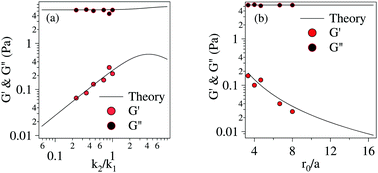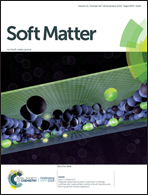A quantitative analysis of memory effects in the viscously coupled dynamics of optically trapped Brownian particles†
Abstract
We provide a quantitative description of the memory effects existing in the apparently random Markovian dynamics of a pair of optically trapped colloidal microparticles in water. The particles are trapped in very close proximity to each other such that the resultant hydrodynamic interactions lead to non-Markovian signatures manifested by the double exponential auto-correlation function for the Brownian motion of each particle. In connection with the memory effects, we quantify the storage of energy in terms of various system parameters and demonstrate that a pair of Markovian particles – confined in individual optical traps in a viscous fluid – can be described in the framework of a single Brownian particle in a viscoelastic medium. We define and quantify the equivalent storage and loss moduli of the two-particle system, and show experimentally that the memory effects are maximized at a certain trap stiffness ratio, and reduce with increasing particle separation. The technique can be generally used to determine the effective viscoelastic parameters of any such fluid–particle systems, and can thus help understand the interactions between active particles mediated by simple or complex fluids.



 Please wait while we load your content...
Please wait while we load your content...